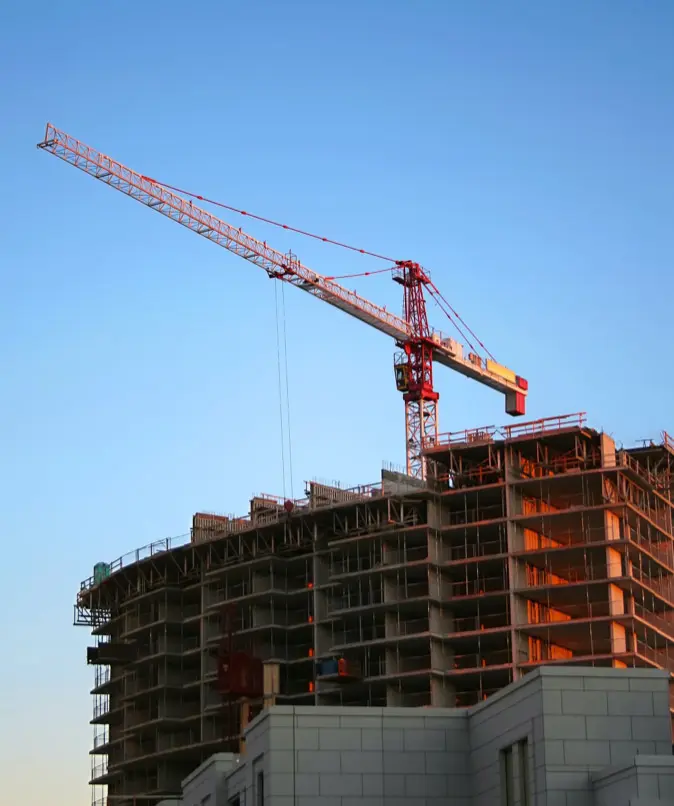Enhancing Residential Security Through Practical CPTED Principles
Welcome to our guide on Crime Prevention Through Environmental Design (CPTED) for Residential Areas. In this article, we will explore how homeowners and communities can utilize CPTED principles to create safe and secure living spaces. From simple yet effective tips to real-life examples, we’ll provide you with actionable insights to help you design your Home Owner Association (HOA) common spaces, homes and entire neighborhoods with security in mind. So, let’s discover how CPTED can transform your residential environment.
Contents
- Understanding CPTED
- Natural Surveillance: “Capable Guardians” – Eyes Everywhere
- Territorial Reinforcement: Defining Boundaries
- Access Control: Limiting Entry Points
- CPTED in Residential Architecture
- Lighting: Illuminating the Night
- Landscaping: Beauty with a Purpose
- Fencing and Signage: Visible Protection
- Community Engagement: Strength in Numbers
- CPTED Success Stories
- Conclusion
- FAQs
Understanding CPTED
Crime Prevention Through Environmental Design (CPTED) is a philosophy that aims to reduce criminal activity by strategically designing the physical environment. By implementing CPTED principles, we strategically place design elements to create spaces that discourage criminal behavior and promote a sense of safety for residents. This all-inclusive approach considers factors such as access, lighting, signage, landscaping, demarcation barriers, and community involvement to deter potential offenders.
Natural Surveillance: Eyes Everywhere
One of the key principles of CPTED is Natural Surveillance, which leverages the power of visibility to deter crime. By ensuring clear sightlines and unobstructed views, we make it difficult for criminals to carry out illicit activities without being noticed. Simple steps like trimming shrubs and trees near windows and using low fences instead of tall walls can enhance natural surveillance by removing places to hide. Remember, a well-placed window or a porch can serve as a watchful eye for your home. An HOA or apartment building/ neighborhood watch committee can designate “capable guardians” with the role of observing and reporting behavior that may be abnormal, or out of the ordinary. It is important to note that reporting among the capable guardians can be done by a number of means such as: cell phones, HAM radio, gmrs/family radio (often called walkie-talkies) and/or in person.
Territorial Reinforcement: Defining Boundaries
Creating a sense of ownership and territoriality is crucial for deterring criminals. Clearly defining property boundaries not only establishes a sense of ownership but also acts as a psychological barrier for potential offenders. Features like well-maintained front yards, fences, landscape hedges, distinctive entrances, and visible address numbers help reinforce territorial boundaries and signal that the community has set clear boundaries, is organized, and is vigilant against crime.
Access Control: Limiting Entry Points
Controlling access to residential areas is an effective way to prevent unauthorized individuals from entering. Installing locked gates, greeting/security guards, using access cards or keypads for entry, and employing smart lock systems can significantly enhance security. By limiting entry points and making it challenging for intruders to gain unauthorized access, we create a safer environment for residents. Remember, fewer access points mean fewer opportunities for criminals to infiltrate. Note: When a design requires multiple points of ingress/egress for safety and security reasons, CPTED can address methods of additional communication and access control.
CPTED in Residential Architecture
When designing or renovating residential properties, incorporating CPTED principles can significantly improve safety. Architects and homeowners can work together to ensure features such as well-placed windows, functional lighting, and secure entrances. Balconies and porches, for example, serve as social spaces while allowing for natural surveillance. Additionally, avoiding blind spots and designing paths that promote visibility can contribute to a safer residential environment. In addition, the designer needs to mind how landscaping is placed next to structures. Tree branches can provide access to upper stories’ windows, terraces, balconies and rooftops; thus, bypassing access control on the ground level.
Lighting: Illuminating the Night
Proper lighting is a powerful tool in preventing crime. Well-lit areas create a sense of security and discourage potential criminals from targeting your property. Use a combination of ambient, task, and accent lighting to ensure that all areas, including entryways, pathways, and parking lots, are well illuminated. Motion sensor lights are also effective in deterring intruders by surprising them with sudden brightness as they approach. Remember, a well-lit neighborhood is a safer neighborhood.
Landscaping: Beauty with a Purpose
Landscaping not only enhances the aesthetic appeal of your residential area but also plays a significant role in CPTED. Strategic landscaping choices can discourage criminal activities and create a more secure environment. Avoid dense shrubbery near entrances and windows, as they provide hiding spots for intruders. Instead, opt for low-maintenance plants, trimmed bushes, and trees (with a lifted canopy) that don’t obstruct visibility. Consider thorny bushes, or cacti, near fences to act as a natural deterrent. By combining beauty with purpose, your landscape can contribute to a safer home.
Fencing and Signage: Visible Protection
Fences and signs serve as visible symbols of protection and act as deterrents to potential criminals. Sturdy fences with locked gates clearly mark the boundaries of your property and discourage unauthorized access. Choose materials that are difficult to climb or cut through. Additionally, signage indicating security systems, guard dog, neighborhood watch programs, or surveillance cameras can deter criminals and give residents a sense of safety. Remember, strong fences and well-placed signs send a clear message that your community takes security seriously.
Community Engagement: Strength in Numbers
Building a strong and engaged community is a vital aspect of CPTED. When neighbors look out for each other and actively participate in community initiatives, the chances of crime decrease significantly. Organize neighborhood watch programs, establish communication channels, and encourage residents to report any suspicious activities promptly. Engage in social activities that bring residents together, fostering a sense of belonging and vigilance. By promoting a united front, your community becomes a force to be reckoned with when it comes to an affront to residential security.
CPTED Success Stories
Let’s take a look at some real-life success stories where the implementation of CPTED principles transformed residential areas:
- Almaden, San Jose, CA: The Almaden neighborhood adopted CERT and CPTED to police and prepare for any emergency eventuality (like earthquakes and fires). In addition to clearing landscaping, installing strategic lighting, and providing storage containers with emergency supplies, the Almaden neighborhood utilized GMRS (General Mobile Radio Service) radios and activated HAM radio operators to tie in to local first responders. This individually owned radio system is kept on, and fully charged, by all the participating residents and is a great deterrent to perps trying to steal catalytic converters and personal items from vehicles….as well as armed intrusions into the neighborhood residents’ homes.
- Hillside Heights, Washington D.C.: By installing strategic lighting, creating community gathering spaces, and implementing natural surveillance techniques, Hillside Heights saw a significant reduction in crime rates and an increase in residents’ peace of mind.
- Garden Grove neighborhood, Garden Grove, CA: Through effective landscaping, well-placed signage, and fostering a strong sense of community, Garden Grove transformed from a high-crime area to a safe and vibrant neighborhood where residents feel secure.
Conclusion
Creating safe homes and neighborhoods is a shared responsibility. By incorporating CPTED principles into our residential areas and HOA’s, we can proactively deter crime and provide a secure environment for ourselves and our communities. From enhancing natural surveillance to reinforcing territorial boundaries, implementing access control measures to promoting community engagement, each step contributes to a safer living space. Let’s work together to design homes that prioritize security without compromising on comfort and beauty. Remember, CPTED is not just a concept; it’s a pathway to a safer future.
FAQs
Q: How can natural surveillance be enhanced in a residential setting?
A: To enhance natural surveillance, ensure unobstructed views from windows and incorporate features like porches or balconies that provide opportunities for residents to observe, and report, on their surroundings.
Q: What are some effective ways to control access to residential areas?
A: Controlling access can be achieved through measures such as locked gates, access cards or keypads, and smart lock systems. These methods limit entry points and make it more difficult for unauthorized individuals to enter.
Q: How can lighting contribute to residential security?
A: Proper lighting creates a sense of safety and discourages criminal activity. Well-lit areas, including entryways, pathways, and parking lots, make it less attractive for criminals to target your property.
Q: How can community engagement improve residential security?
A: Building a strong and engaged community plays a crucial role in residential security. Neighborhood watch programs, communication channels, and social activities foster a sense of belonging and encourage residents to look out for one another.
Q: Can CPTED principles be applied to existing homes and neighborhoods?
A: Absolutely. While incorporating CPTED principles during the initial design phase is ideal, existing homes and neighborhoods can also implement these principles through modifications such as improved lighting, landscaping changes, enhanced communications, and community initiatives.





